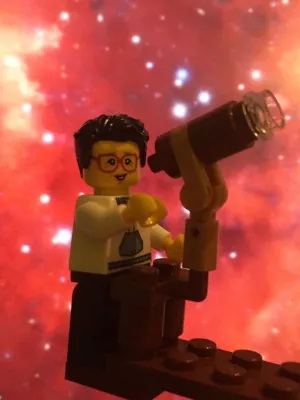
Jens Hoeijmakers
ASSOCIATE SENIOR LECTURER

A spectral survey of WASP-19b with ESPRESSO
Author
Summary, in English
High-resolution precision spectroscopy provides a multitude of robust techniques for probing exoplanetary atmospheres. We present multiple VLT/ESPRESSO transit observations of the hot-Jupiter exoplanet WASP-19b with previously published but disputed atmospheric features from lowresolution studies. Through spectral synthesis and modelling of the Rossiter-McLaughlin (RM) effect we calculate stellar, orbital and physical parameters for the system. From narrow-band spectroscopy we do not detect any of HI, FeI, MgI, CaI, NaI, and KI neutral species, placing upper limits on their line contrasts. Through cross-correlation analyses with atmospheric models, we do not detect Fe I and place a 3σ upper limit of log (XFe/X⊙) ≈ -1.83 ± 0.11 on its mass fraction, from injection and retrieval. We show the inability to detect the presence of H2O for known abundances, owing to lack of strong absorption bands, as well as relatively low S/N ratio. We detect a barely significant peak (3.02±0.15 σ) in the cross-correlation map for TiO, consistent with the sub-solar abundance previously reported. This is merely a hint for the presence of TiO and does not constitute a confirmation. However, we do confirm the presence of previously observed enhanced scattering towards blue wavelengths, through chromatic RM measurements, pointing to a hazy atmosphere. We finally present a reanalysis of low-resolution transmission spectra of this exoplanet, concluding that unocculted starspots alone cannot explain previously detected features. Our reanalysis of the FORS2 spectra of WASP-19b finds a ~100× sub-solar TiO abundance, precisely constrained to log XTiO ≈ -7.52 ± 0.38, consistent with the TiO hint from ESPRESSO. We present plausible paths to reconciliation with other seemingly contradicting results.
Department/s
- Lund Observatory - Has been reorganised
Publishing year
2021
Language
English
Pages
435-458
Publication/Series
Monthly Notices of the Royal Astronomical Society
Volume
505
Issue
1
Document type
Journal article review
Publisher
Oxford University Press
Topic
- Astronomy, Astrophysics and Cosmology
Keywords
- Methods: data analysis
- Planets and satellites: atmospheres
- Planets and satellites: individual: WASP-19b
- Stars: activity
- Stars: individual: WASP-19
- Techniques: spectroscopic
Status
Published
ISBN/ISSN/Other
- ISSN: 0035-8711

